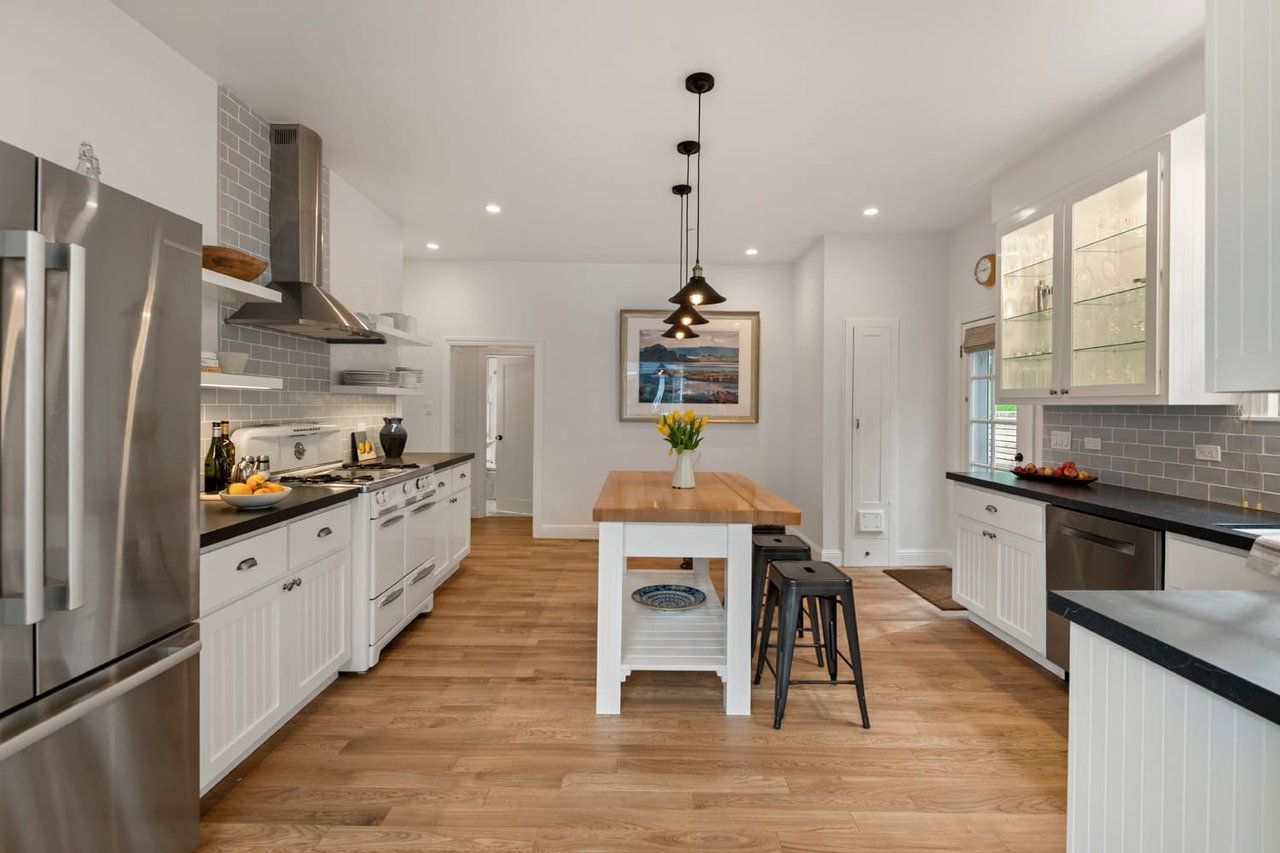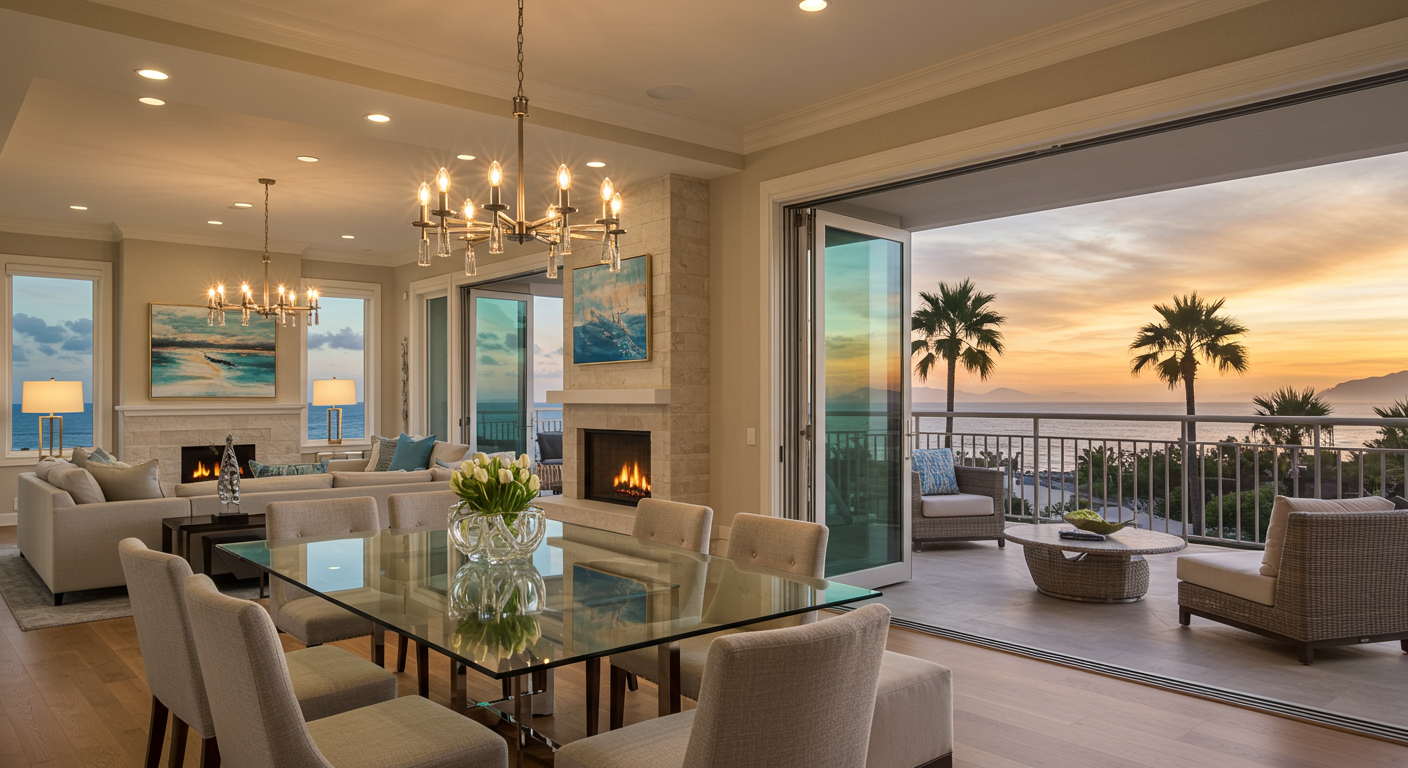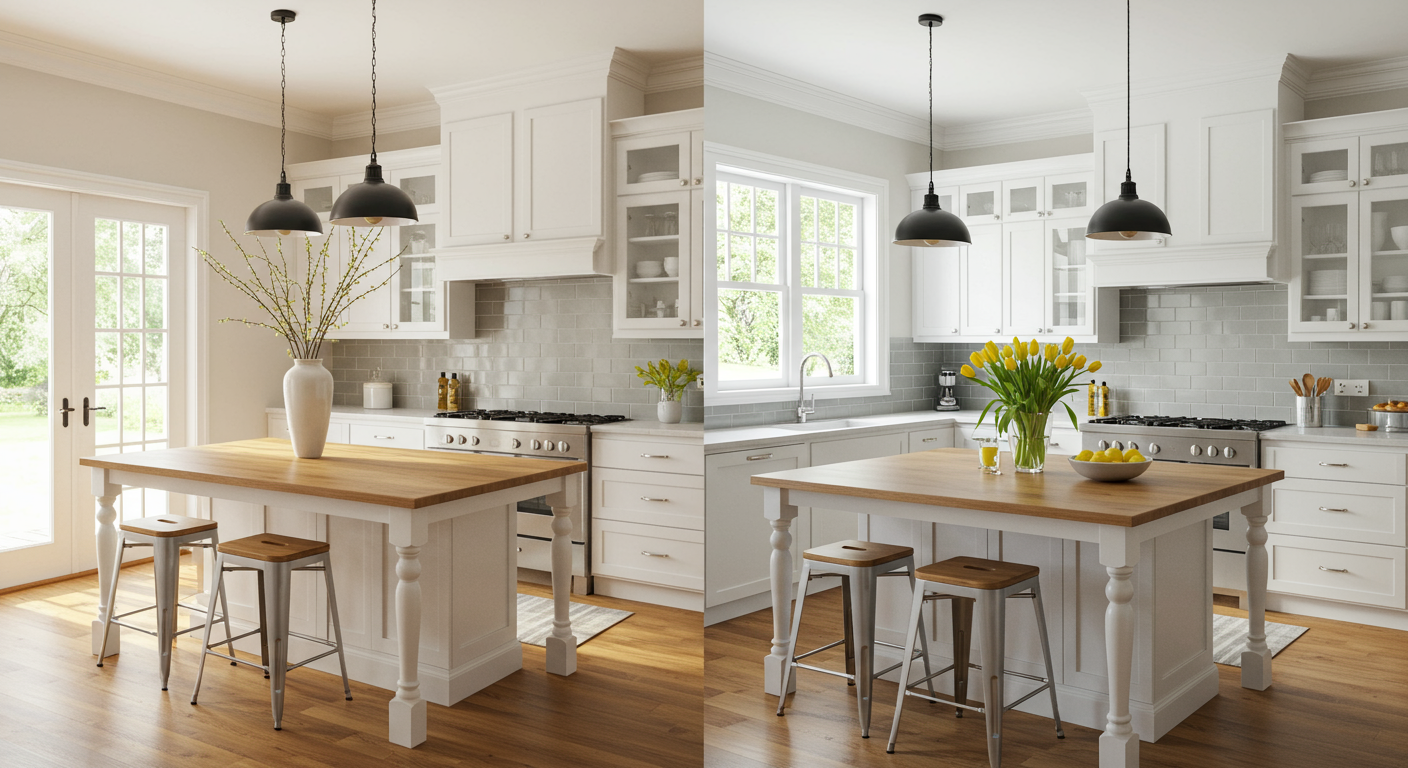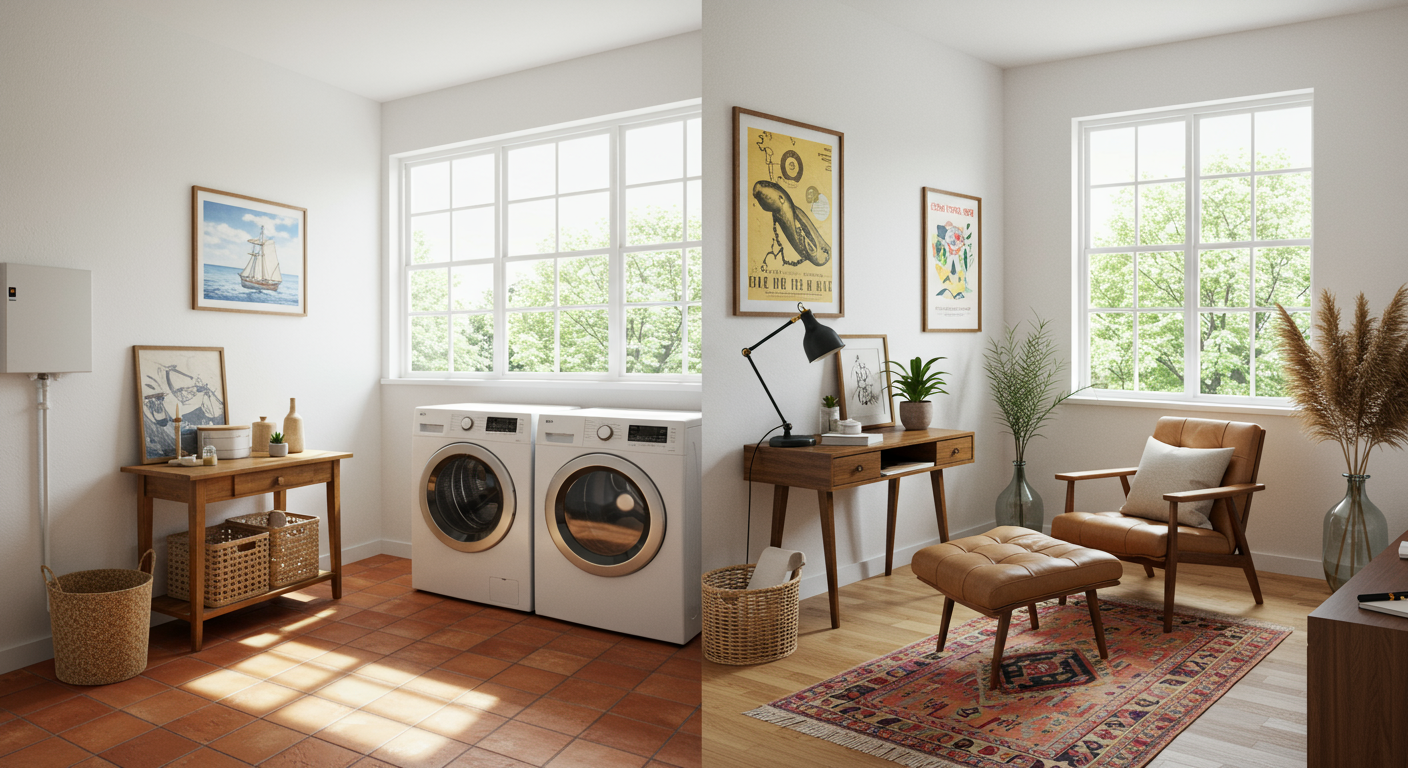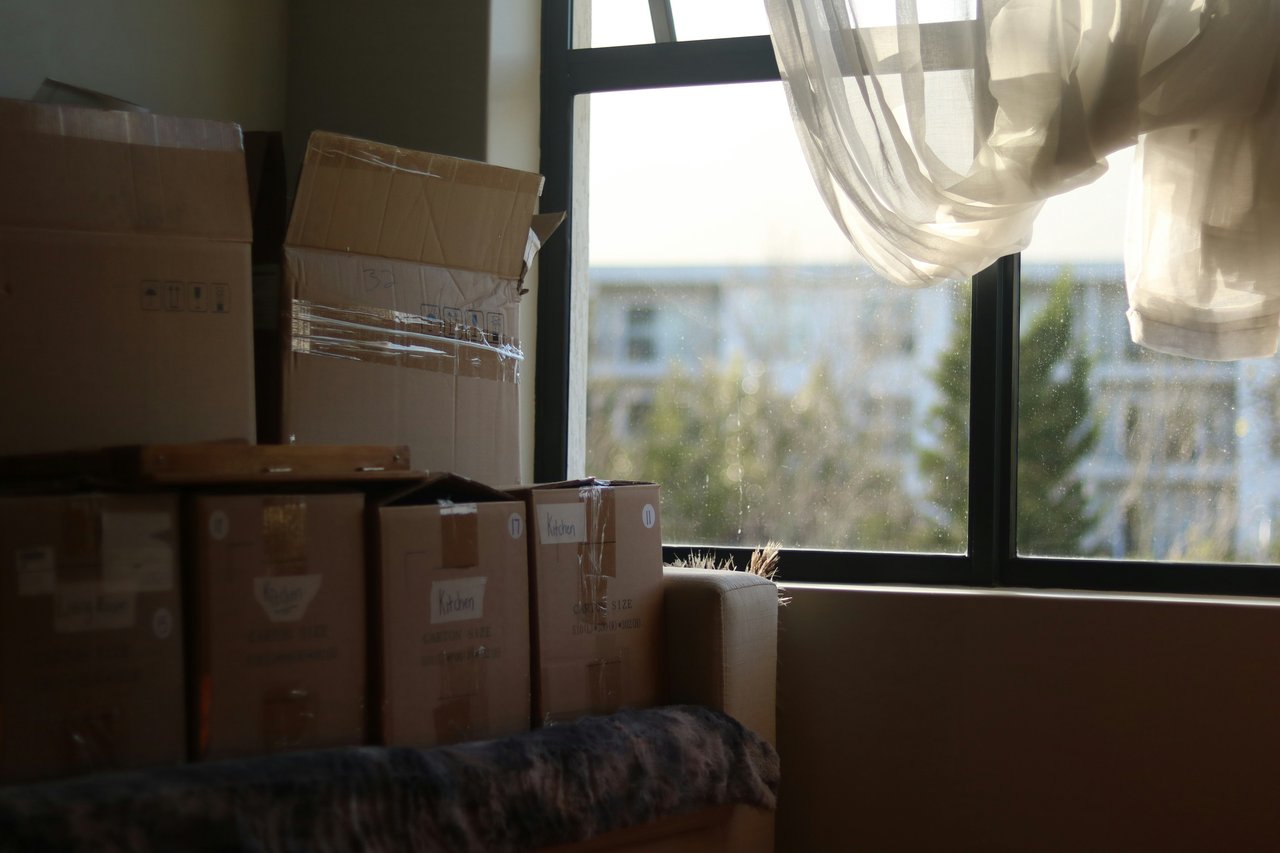Browsing photos and ideas on Houzz and Pinterest can be really fun. But how can you make creating your dream home a reality? The truth is that renovations and construction are huge undertakings. It takes time and effort to plan, cost, source, and secure items while not incurring huge change fees and cost overruns. We talked to many experienced homeowners, designers, contractors, and industry insiders to get tips and info to help you prepare to make the right choices for your project and avoid expensive mistakes.
Issue #2 Home Renovation Project Management Tips from an Experienced Home Remodeler
In our second Guide to Home Remodeling, Boulevard sat down with seasoned home remodeler Lynne Watson who chose to manage her own remodel projects using the traditional Design-Bid-Build method. Lynne has some great insights into getting the home you want while avoiding costly mistakes.
Bitsa: Did you remodel an existing structure or teardown and build a completely new structure?
Lynne: We are currently on our 4th remodel. None have been new structures. Two renovations were in California and two were on the East Coast... In San Diego, we renovated a home that we rented first before buying. The property had amazing views of the Pacific that the existing structure did not capitalize on. Our third, in San Anselmo, was the biggest renovation/rebuild in terms of time and energy. Built-in 1907, it had charm and character but needed a major overhaul. We even had to go 9’ below grade to replace the foundation. We knew it was going to need a lot of work but until you get in and pull it apart with your own good team, you do not know the full extent of what will be required.
Bitsa: Did you hire both an architect and contractor or use a design-build platform?
Lynne: We always hire an architect and contractor, not a design-build platform. Unless you are seriously building multiple projects, select a general contractor (GC) even if you are tempted to try it yourself. You are unlikely to get good subs on your own as most are committed to working for specific GCs. When you are looking for and interviewing GCs, I advise looking into the subs they work with and their reputations as well.
Bitsa: Did you act as your own project manager or did you hire one, and/or did your builder or architect act in both roles?
Lynne: I have a background in commercial real estate development, so I have always been my own project manager (PM). I do use an architect and a GC since the experience they bring to the project creates a better end result. I have the skills to make adjustments to the architect’s plans to keep us in line with the budget. Plans are always simpler on paper; turning plans into reality requires the hands-on ability to visualize the space in 3D. If you find a property that you really want to live in and it’s in a desirable location with features that you love, find a good project manager to help you. The end result will be worth living through the turmoil of construction.
I hire a designer/stager for a few hours at various stages throughout the process. The wisdom of a professional might cost a couple of hundred dollars per session, but it is key so you don't make costly mistakes. They will see things that you won’t. For example, the San Diego house had two sets of glass La Cantina open fold-up doors. The designer realized furnishing the interior and exterior spaces would be difficult with so many open walls. I then value-engineered the design to include only one set of expensive doors and placed the windows on the remaining wall higher to make furnishing the interior and exterior easier and maximize the ocean views. It’s strategic for regular homeowners to spend some money to hire good people with an experienced eye to help make those decisions. Designers also will know what is hip and trendy and where to best source finishings.
Bitsa: What surprised you most in the process?
Lynne: I was shocked at how much value we were able to create. We set out to renovate each house for ourselves to live in over the long term. In each case, life took us to a new location and upon selling our home, we were pleasantly surprised with how much the market appreciated what we created.
Although the homes in California were renovated for us to live in for the longer term, as East Coaster, I knew there was a possibility we could move back East. So I made choices that would have broader market appeal if we did sell our home in the short run.
For each of our homes, we lived in the area for a while prior to buying so that we could learn what locations and home features really appealed to us. We learned the pros and cons of different neighborhoods and knew what our key wants were. We are drawn to walkable locations near towns and homes with views. In Marin, sunlight was a must-have for us. So, for example, we crossed Mill Valley off our list after renting there because it was too foggy for us. San Anselmo ended up being the ideal Marin town since we could walk to Main Street and it was generally sunny. School districts were not a factor as our children were older. I highly recommend taking time to get to know an area before buying to choose the one that is the best fit for your needs.
We were lucky with the markets going up in several cases. But even in a tough market in San Diego, we were able to command an above-market price with multiple offers. We created value by doing strategic upgrades that we knew were sought after in that market - installing solar panels, a tankless water heater, and water-wise landscaping. By living in the house for a while prior to renovating, an owner will be better able to assess what they love and what needs to be changed, so the renovation can maximize the added value. For example, while sitting on our tiny oceanfront balcony watching migrating whales in San Diego, it was easy to see that a larger balcony would be a big upgrade. And by repositioning the ocean-side windows above their original location, we could minimize views of our neighbors’ roof lines and maximize the view of the ocean horizon.
Bitsa: What was the most difficult part of the process, the permitting, time delays, changes in orders, and weather?
Lynne: In California, permitting is the most difficult part of a project. Do your homework to get to know people in the permitting department. If using a project manager, choose one with good relationships. Our project in San Anselmo was the most complex with 3 phases and 3 rounds of permits required. Covid really complicated it more with rotating inspectors and people in various positions in the permitting department. The final inspector found something missed by earlier inspectors, which would have required major changes to the completed structure at a great cost. The contractor and I were able to find the simplest least costly workarounds for the issue by meeting several times with the town staff and suggesting various options. Be prepared to stay level-headed and flexible as the inspectors ultimately have the power.
| Insight from another local Kentfield homeowner and successful Marin developer:
“ … permitting is always the hardest part. The County is extremely unorganized and the permitting process is not as streamlined as it could/should be. They have recently moved to an electronic system, which I hope will increase efficiency going forward, but there is still a lot to be done for them to improve. Patience is key in the permitting process!” - Natasha Sadeghi |
Bitsa: Did you stay on budget? If yes, how did you manage that herculean task, and if not, why, what would you do differently?
Lynne: I stayed on a budget in all 4 renovation projects by looking at all of the hard and soft costs with my contractor’s budget tied to mine and measuring actual expenditures vs. budget frequently. For example, designers can help with the selection of appliances and other materials. Once you know what they will run, priorities can be set so those costs fit the budget. I have various price point options for certain line items like light fixtures. I would wait to place orders so I could adjust if there were surprises along the way. If I really wanted to splurge on statement light fixtures, I might trade-off by choosing a less expensive guest room bathroom counter with the same vibe to the source. It is about prioritizing what you care most about and being flexible with lower-priority line items.
Bitsa: For anyone considering tackling a rebuild/remodel what would be the most important advice you'd impart?
Lynne: Be onsite as much as possible. Turning 2D paper plans into a reality is not straightforward - especially in older homes. I use blue tape to lay out windows, walls, the kitchen island, and various elements of the plan so I can walk around it in real-time and see if it ultimately will make sense with furnishings and how my family wants to live in the space.
Another important step I always took during the planning process was to consult my Real Estate Broker about our plans. They are a wealth of information about resources and design and can give you feedback on the potential increase in market value your upgrades could be worth.
10 tips to maximize a remodel:
- Neighborhood - live in the area for a while to hone in on the ideal area that meets your family’s needs
- Property Features - live in the house for a while to best determine how you want to live in it and which features to highlight in a reno
- Organization- Budget all hard and soft costs; your scope of work, or specifications document should have details of everything to be done, from start to finish
- General Contractor - hire a respected GC with good subs
- Communication - make sure that your general contractor has a copy of your specifications and work to stay on the same page to tie budgets together
- Designer - hire a designer for spatial eye at the beginning of design and later with trend insights on furnishing and sourcing resources
- Blue tape - plan in the space using tape to mark out details including where to position the windows, furnishings, outlets, lights, switches etc.
- Decision making - be on-site as much as possible as issues come up
- Market Appeal - even if you are planning the project for your family, think about choices that appeal to the buyers in your market and don’t hesitate to obtain the opinion of your real estate agent.
- Flexibility - it is impossible to factor in issues that may arise during your project; be creative and willing to value engineer changes to stay on budget.
While Lynne clearly has the skills, it does take a certain type of person to manage a reno project yourself. You have to be organized, calm under pressure, strategic, and confident — not to mention being able to afford the time to plan, coordinate and oversee the work. If you have qualms about taking it on yourself, then consider hiring a project manager. Yes, there will be a fee… but consider that a badly managed project can cost you time and money and may not achieve the results you were after. A pro will take care of everything and allow you to rest easy, knowing you’re in safe hands and help you avoid expensive mistakes.
About Lynne Watson:
After receiving my MBA from the University of Virginia’s Darden School of Business, I joined LaSalle Partners and worked in their Investment Management Group, Development Group and Property Finance Group over eight years. While in the Development Group, I was the Financial Project Manager for a $70 million office and retail complex. Over my 3 years in that capacity working closely with my colleague, an architect and Construction Manager for the project, I learned that I really loved the design and construction aspects of what we were creating. Those skills and experiences were very useful in my 4 home renovations. In Marin, I worked for RBL Real Estate as a Property Manager for 2 retail/mixed-use centers for several years. I found the challenge of improving and maintaining older centers with limited budgets to be very satisfying. Sourcing great contractors and collaborating with them made my job fun. It paralleled how Dave and I worked on our own home renovation in San Anselmo.
Source:
